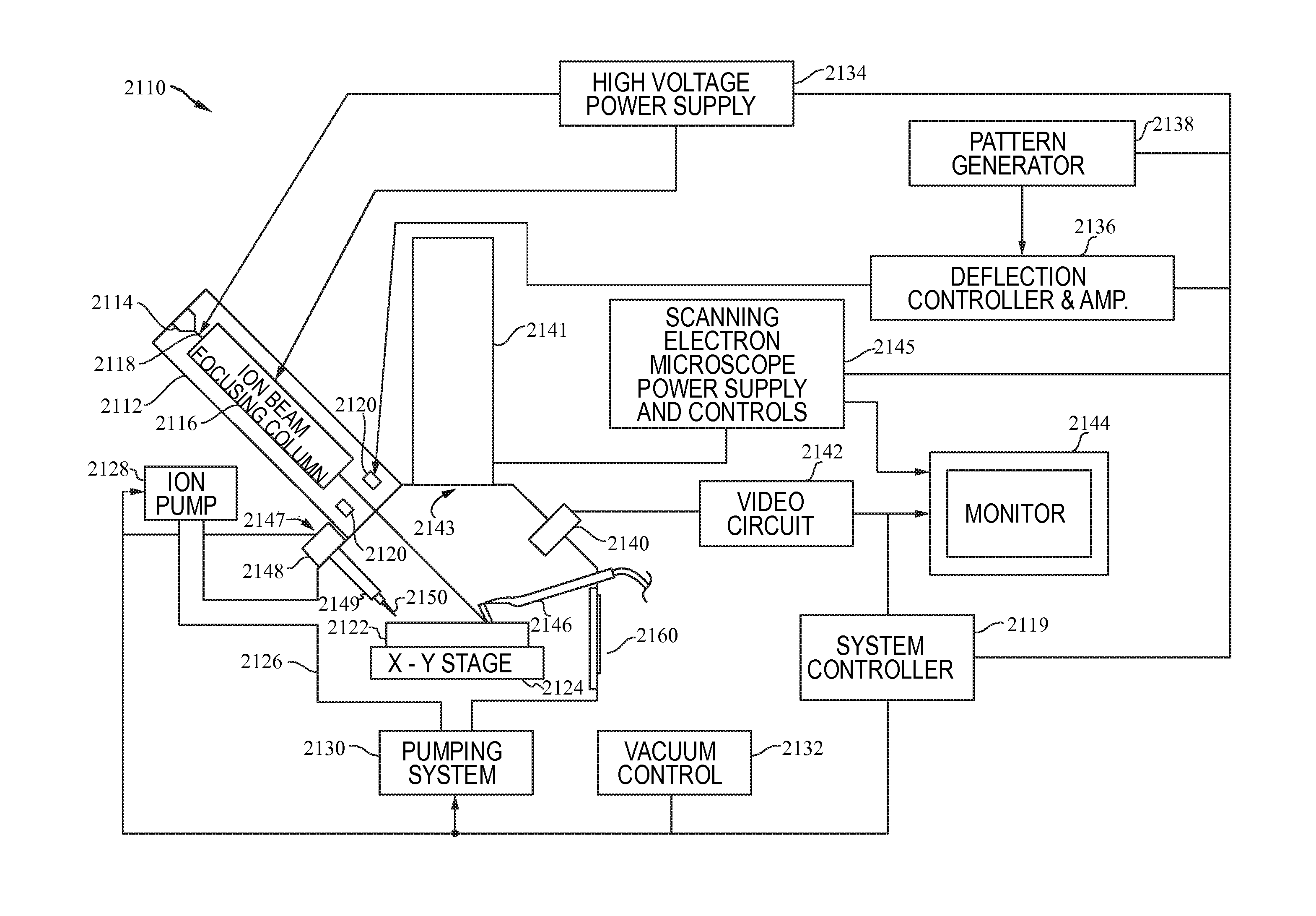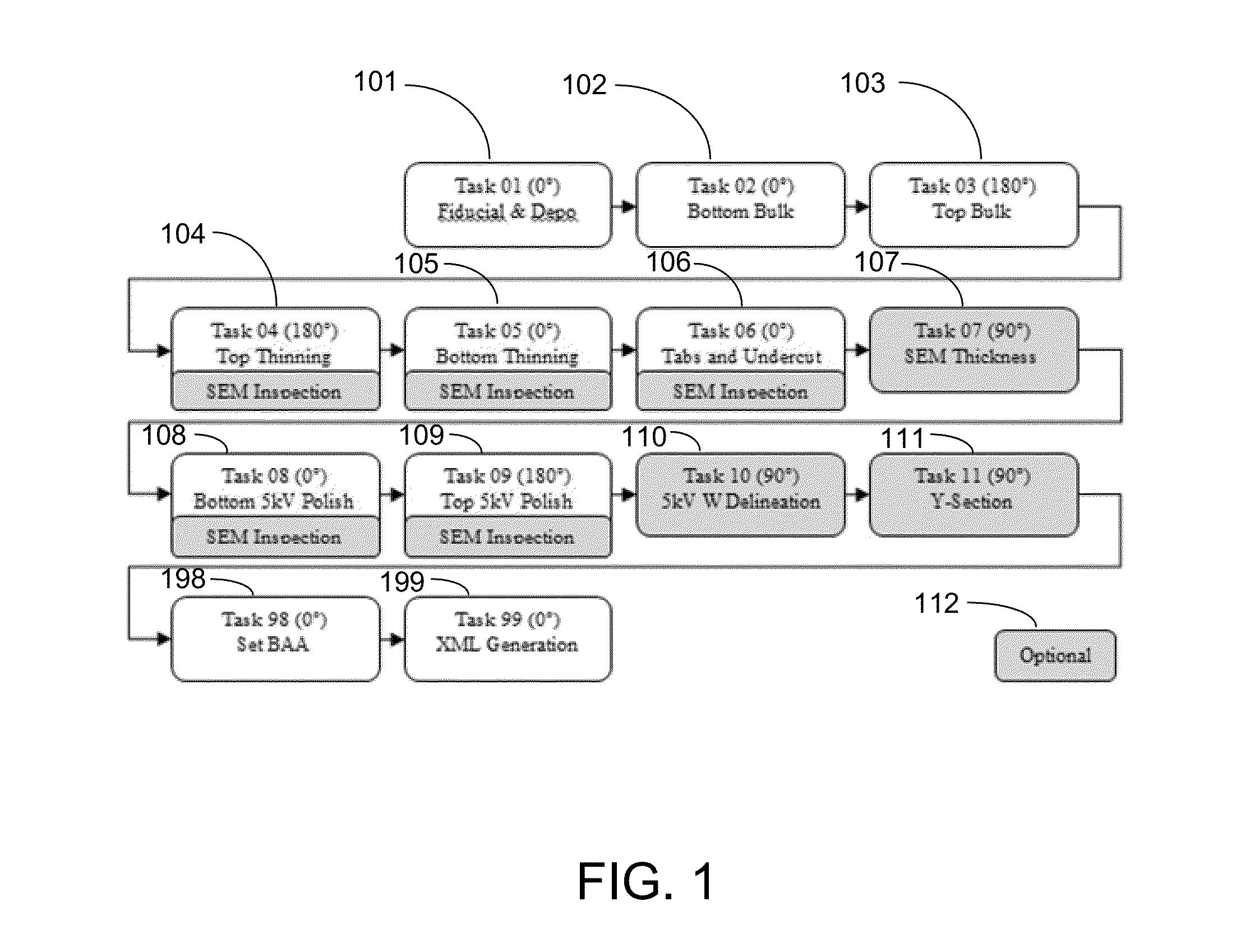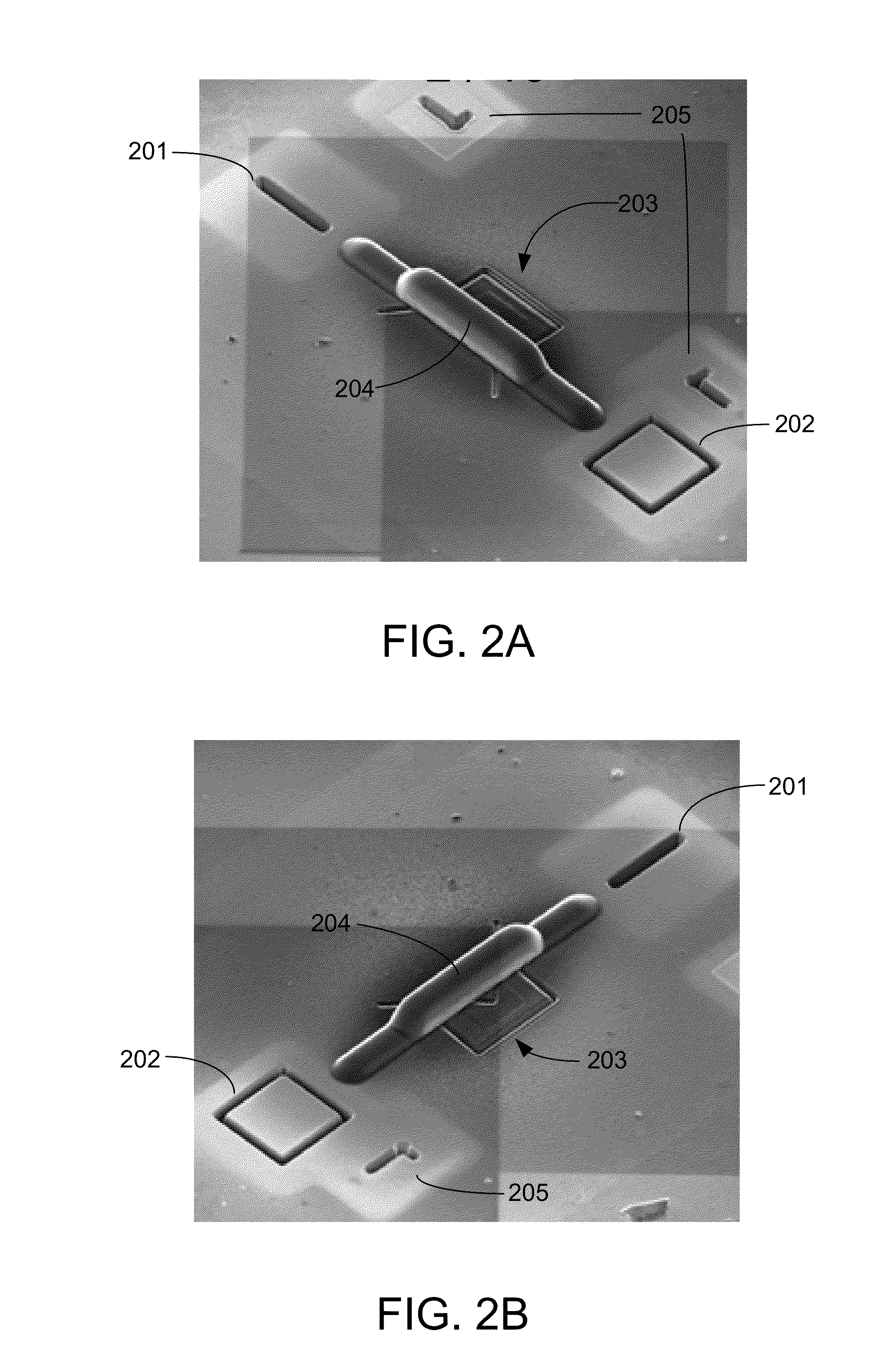Preparation of lamellae for tem viewing
a technology of lamellae and lamellae, which is applied in the direction of electrolysis components, vacuum evaporation coatings, coatings, etc., can solve the problems of destroying much of the original sample, time-consuming work, and too small features to be measured
- Summary
- Abstract
- Description
- Claims
- Application Information
AI Technical Summary
Benefits of technology
Problems solved by technology
Method used
Image
Examples
Embodiment Construction
[0053]Preferred embodiments of the present invention are directed toward a method for improved control of lamella placement and sidewall orthogonality. This allows fully automated creation of lamella having a thickness of less than 100 nm, less than 70 nm lamella, or less than 50 nm lamella.
[0054]Embodiment of the invention as described below produce a lamella in which the thickness of the viewing area of the finished lamella preferably varies by less than 25%, more preferably by less than 10%, and even more preferably by less than 3% over the viewing area. The faces of the finished lamella are preferably orthogonal to the substrate surface within 5 degrees, more preferably within 1 degree and even more preferably within 0.5 degrees.
[0055]The viewing area of the finished lamella is typically between 0.2 μm and 5 μm wide and up to 2 μm deep.
[0056]FIG. 1 shows an overview of a process according to an embodiment of the present invention. The individual steps are described in more detai...
PUM
| Property | Measurement | Unit |
|---|---|---|
| landing energy | aaaaa | aaaaa |
| landing energy | aaaaa | aaaaa |
| landing energy | aaaaa | aaaaa |
Abstract
Description
Claims
Application Information
 Login to View More
Login to View More - R&D
- Intellectual Property
- Life Sciences
- Materials
- Tech Scout
- Unparalleled Data Quality
- Higher Quality Content
- 60% Fewer Hallucinations
Browse by: Latest US Patents, China's latest patents, Technical Efficacy Thesaurus, Application Domain, Technology Topic, Popular Technical Reports.
© 2025 PatSnap. All rights reserved.Legal|Privacy policy|Modern Slavery Act Transparency Statement|Sitemap|About US| Contact US: help@patsnap.com



